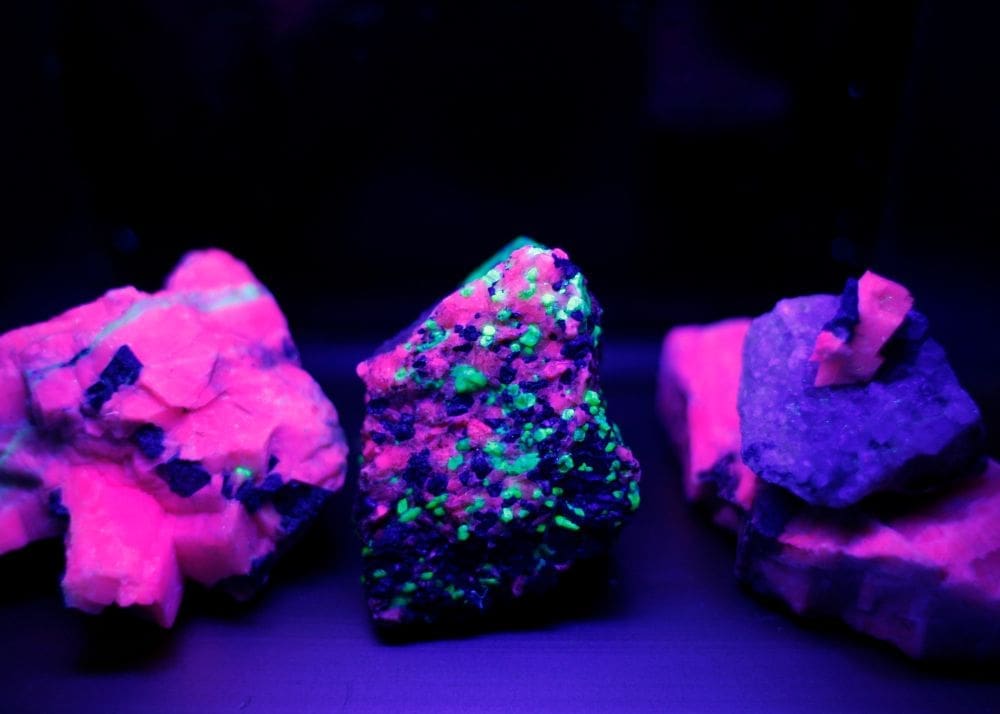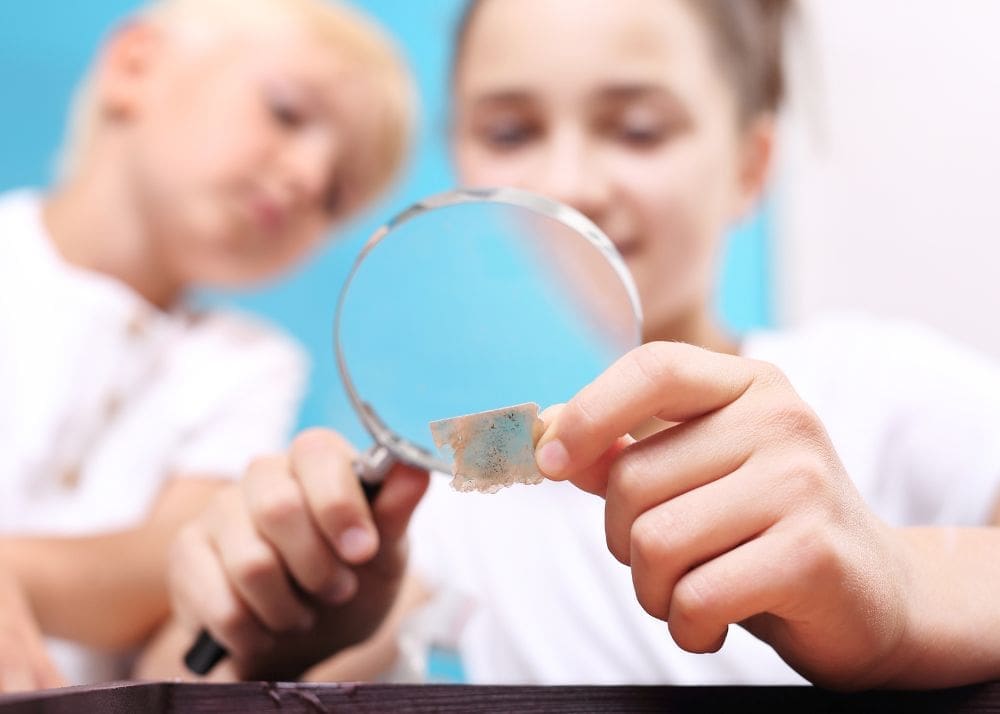Introduction: The Hidden Colors of Minerals
Exploring the silent, dark underground, one might never suspect the rainbow of color that luminescent minerals can display. These rocks and minerals don’t glow by themselves; their secret colors are unlocked only with the aid of ultraviolet light. This phenomenon occurs due to specific chemical reactions that vary from mineral to mineral.
Franklin’s Luminous Legacy
New Jersey’s town of Franklin is renowned for its deposits of luminescent minerals. Minerals such as calcite and willemite exhibit mundane colors in daylight but become luminous under UV light, with calcite glowing red and willemite a vibrant green. These minerals elevate Franklin’s status within the mineralogy realm for their remarkable luminescent properties.
The Colors of Luminescent Minerals
| Mineral Name | Color in Daylight | Luminescent Color | Location Found | Additional Notes |
|---|---|---|---|---|
| Calcite | White to pink/red | Red | Franklin, NJ | Shines red under UV light. |
| Willemite | Green to yellow-brown | Green | Franklin, NJ | Exhibits green fluorescence under UV light. |
| Zincite | Orange-red | Orange-red | Franklin, NJ | May show luminescence, zinc oxide mineral. |
| Franklinite | Black | Non-fluorescent | Franklin, NJ | Does not fluoresce but often found with others that do. |
A Spectrum of Hidden Splendor
When brought up from underground into the light, luminescent minerals such as fluorite can range in their response to UV light. While Weardale fluorite can glow a bright blue, its counterpart from Rosiclare may show no reaction. These unpredictable reactions underscore the thrilling unpredictability of mineral luminescence.
Illuminating Education
Using UV light to demonstrate the luminescence of minerals can significantly enhance educational programs. By observing how luminescent minerals respond to UV light, students and enthusiasts alike can gain insight into the complexities of mineral properties and their compositions.
Conclusion: Revealing Nature’s Masterpieces
Luminescent minerals are like nature’s hidden masterpieces, their true beauty revealed only under the glow of UV light. This unseen spectacle tells of the complex and beautiful systems beneath our earth, offering an exquisite view into the world of geology.
10 FAQs on Luminescent Minerals:
- What causes minerals to glow under UV light? Minerals glow under UV light due to the presence of certain chemicals that react to ultraviolet rays, releasing visible light in a variety of colors.
- Can all minerals fluoresce under UV light? No, not all minerals can fluoresce. The ability to fluoresce is dependent on the mineral’s chemical makeup and the presence of activator elements.
- Why don’t some samples of fluorite glow while others do? The luminescence in fluorite can vary because it often depends on impurities within the mineral that may be present in some locations but not in others.
- Is the luminescence of a mineral the same color as the mineral itself? Not always. The luminescent color can be dramatically different from the mineral’s appearance in daylight. For example, calcite can appear white or pink in daylight but glows red under UV light.
- Can we see the luminescence of minerals without UV light? Luminescence is typically not visible without a UV light source, as it activates the glowing properties of the minerals.
- What is the most reliable mineral for luminescence? While there is no single most reliable mineral, willemite and calcite are known to consistently show strong luminescence in certain locations, such as Franklin, New Jersey.
- Are luminescent minerals safe to handle and collect? Yes, luminescent minerals are generally safe to handle and collect. However, it is always important to handle any type of mineral with care.
- Can luminescence in minerals fade over time? Repeated exposure to UV light can sometimes cause the luminescent properties of some minerals to fade, but this is not always the case.
- What is the best way to display luminescent minerals? Displaying them in a dark environment with access to a UV light source is ideal for showing their luminescent properties.
- Are there any commercial uses for luminescent minerals? Luminescent minerals are used in various applications, from creating glow-in-the-dark materials to aiding in the study of geological and environmental phenomena.




